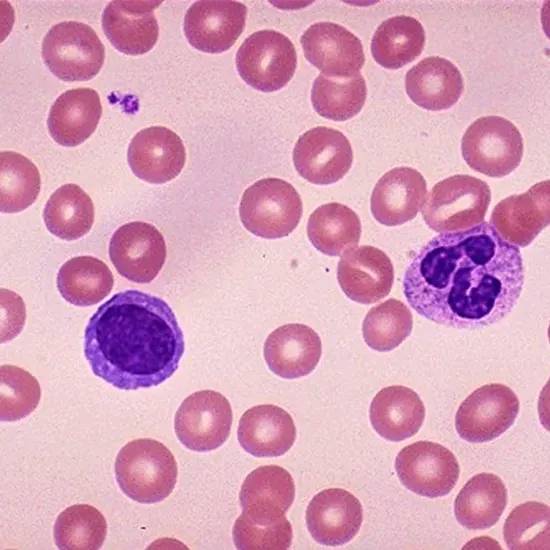
Book Giemsa Stain Appointment Online Near me at the best price in Delhi/NCR from Ganesh Diagnostic. NABL & NABH Accredited Diagnostic centre and Pathology lab in Delhi offering a wide range of Radiology & Pathology tests. Get Free Ambulance & Free Home Sample collection. 24X7 Hour Open. Call Now at 011-47-444-444 to Book your Giemsa Stain at 50% Discount.
Giemsa stain is frequently used to construct a karyogram and is utilized in Giemsa banding, also known as G-banding, to stain chromosomes (chromosome map). Chromosome abnormalities such as translocations and rearrangements can be found using this method.
Giemsa's distinctive formulation is the main reason it is categorized as a versatile stain.
Differential stains include Giemsa. It comprises the acidic dyes eosin and azure and the basic dye methylene blue. The fundamental cellular components, including cytoplasm and granules, are stained by the mordant dyes eosin and azure.
Romanowsky staining, often referred to as Romanowsky-Giemsa staining, is a prototype staining method that served as the predecessor of several other but related stains frequently employed in cytopathology and hematology (the study of blood) (the study of diseased cells).
Giemsa dye is a combination of the colors Azure, Eosin, and Methylene Blue. Different Giemsa stain formulas may differ in the ratios of these dyes and even in their subtypes. Giemsa powder dye from BioGnost, BSC-certified, is an ideal combination of the dyes above and is available in its unaltered fo.
Giemsa staining can be done in two ways: quickly (10% stain working solution) and slowly (3% stain working solution). The quick procedure (10% stain working solution) The most popular technique for staining 1–15 slides at once is this one.
Methylene blue-eosin and methylene blue combine to form the dye known asGiemsa. It bears the name of the German chemist and bacteriologist Gustav Giemsa. For histopathologic diagnosis, this dye solution is employed. Blood films are stained with it.
pH 6.8
The Wright-Giemsa staining process requires a buffer with a pH of 6.8; else, the results will not be sufficient. If the pad is too basic, the stain will be too blue, and the cytoplasmic detail won't be as prominent; if it is too acidic, the color will be too red, and the nuclei will be too light.
Giemsa stain is a traditional differential stain composed of chemicals (Azure, Methylene blue, and Eosin dye). It is frequently used in cytogenetics and histopathology to diagnose spirochetes, malaria, and other blood parasites.
A differential stain is the Giemsa stain.
Differential stains include Giemsa stain. It can be applied to research how pathogenic microorganisms cling to human cells. Cells from humans and bacteria are stained differently, pink and purple, respectively. It can be utilised to make a histological diagnosis of malaria as well as a few other blood parasites caused by spirochetes and protozoa.
| Test Type | Giemsa Stain |
| Includes | Giemsa Stain (Pathology) |
| Preparation | |
| Reporting | Within 24 hours* |
| Test Price |
₹ 300
|

Early check ups are always better than delayed ones. Safety, precaution & care is depicted from the several health checkups. Here, we present simple & comprehensive health packages for any kind of testing to ensure the early prescribed treatment to safeguard your health.